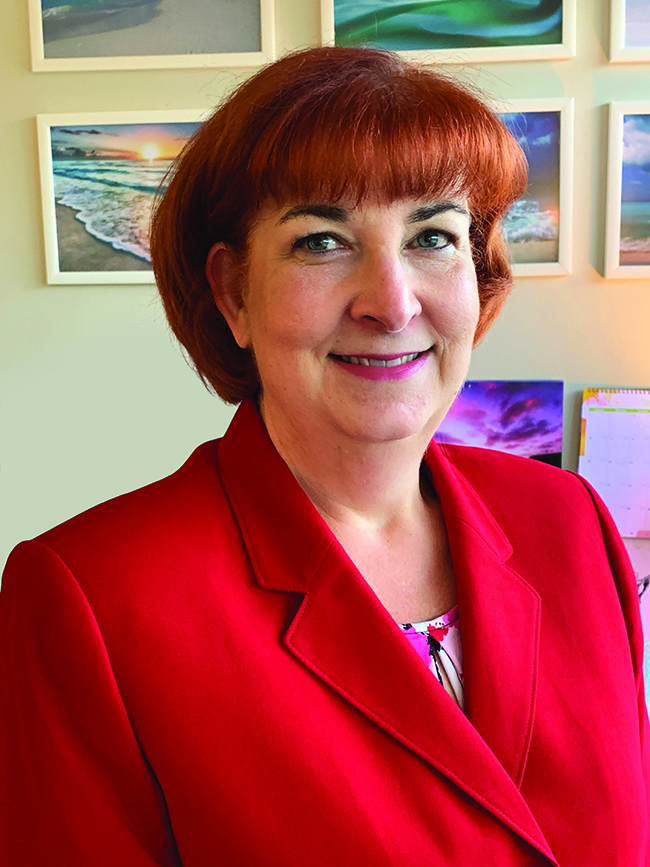By Laurie A. Shuster
What does infrastructure have to do with social justice?
That was the question we started with when Civil Engineering and the Civil Engineering Source — ASCE’s online news and information hub — embarked on a content series this summer under the heading “equity and infrastructure.”
 dit photo credit]
dit photo credit] We began by recognizing that the social justice movement of 2020 was not a one-time thing. Nor were the sentiments that gave rise to it — the long-term suffering of many disempowered and disregarded groups within our society.
But this decade’s social justice movement has felt different, as though racism, classism, economic inequity, and discrimination of every sort were finally getting the public airing and attention they deserved. And there is no longer any way to deny that some of our nation’s infrastructure has added — wittingly or not — to some unjust outcomes.
In its $2 trillion American Jobs Plan, the Biden administration established the goal of undoing some of the harm that has come from some large-scale infrastructure projects, including (but not exclusive to) the Interstate Highway System. “Too often, past transportation investments divided communities ... or … left out the people most in need of affordable transportation options,” stated a summary of the plan released by the White House on March 31. The proposal is part of the administration’s $7 trillion “Build Back Better” concept for recovering from the economic downturn caused by the COVID-19 pandemic. That plan seeks spending on housing, education, health care, and — notably — economic fairness as well as the more traditional forms of infrastructure designed and constructed by civil engineers.
ASCE’s social justice and equity series falls in line with two of the tenets of the Society’s Code of Ethics, namely those that require members to “acknowledge the diverse historical, social, and cultural needs of the community, and incorporate these considerations in their work,” and to “consider and balance societal, environmental, and economic impacts, along with opportunities for improvement, in their work.”
So for this issue of Civil Engineering, we asked a panel of younger engineers from diverse backgrounds to offer their thoughts on how the profession of civil engineering and the design and construction of the nation’s infrastructure could do better. Their answers — presented in the feature article “Social Justice, Equity, and Infrastructure,” — were profound.
“You’ll see in almost every city that the biggest flooding issues are in areas that are low income and often minority, and that is not an accident,” said Richard Fernandez, P.E., PMP, ENV SP, M.ASCE. “I don’t think that the engineers necessarily wanted that, but that was the outcome.”
“There have been some recent studies on how poorer communities are being more affected by climate change than exclusive communities,” said Héctor Colón de la Cruz, EIT, A.M.ASCE. “It made me think: How are we going to tackle climate change and community disparity, when right now, we’re sometimes not even doing really good basic work?”
Increasing the diversity within the profession itself can lead to new approaches that some might not have thought of. Mentoring students from disadvantaged backgrounds can go a long way toward that goal, according to Kevin Brown Jr., P.E., M.ASCE, the subject of our expert profile 7 Questions. And integrating diversity issues into the education of the next generation of engineers also has a role to play, as Walter C. Lee, Ph.D., explains in this month’s Higher Learning department.
And simply continuing to speak up, even when others object — though never easy — can help. Panelist Saki Urushidani, P.E., ENV SP, M.ASCE, said, “I am, I think, one of the only women of color among the engineers at my organization. I definitely have been trying to ask a lot of questions about what we are doing and what we can do better to include equity into project planning and master planning.”
Things will only get better, said panelist Jose Aguilar, P.E., ENV SP, M.ASCE, “when engineers get involved to create holistic solutions.”
Laurie A. Shuster is the editor in chief of Civil Engineering.
This article first appeared in the November/December 2021 issue of Civil Engineering.



